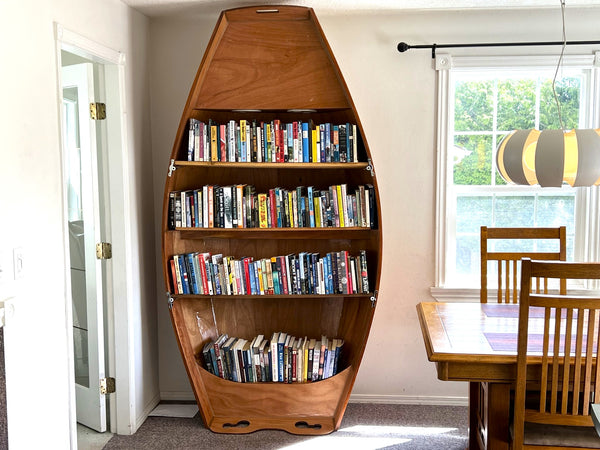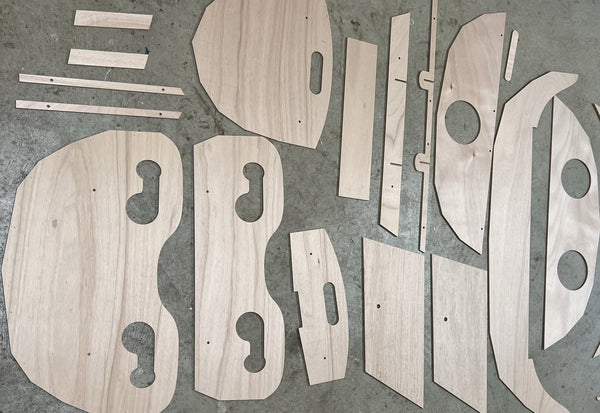Developing the RowCruiser Sailing Rig
 Interest in our RowCruiser is quickly growing, and there are now a few dozen currently being built. We also completed our first RowCruiser build class last week, and it was a huge success. Our next RowCruiser build class, scheduled for next September in Port Townsend, is already two thirds full, so if you're interested in attending be sure to sign up soon (www.rowcruiser.com).
Interest in our RowCruiser is quickly growing, and there are now a few dozen currently being built. We also completed our first RowCruiser build class last week, and it was a huge success. Our next RowCruiser build class, scheduled for next September in Port Townsend, is already two thirds full, so if you're interested in attending be sure to sign up soon (www.rowcruiser.com).
There's also been a lot of inquiries into the sailing rig for the RowCruiser, which we are currently developing. Eventually, we will be providing plans and directions for the sailing rig, but I will give a brief overview of what we are developing.
Key attributes we are trying to incorporate are affordability, relative simplicity and performance. We decided that a ketch rig would be most effective for the RowCruiser, but we didn't want the costs to spiral out of control. Two sails, masts, hardware, etc add up quickly in price. Just to give perspective for the uninitiated in purchasing sailing equipment, it typically costs $1000 for a single dinghy sail to be custom made by a sailmaker. Sail, spar, and hardware costs could quickly add up to $5000 for the ketch rig we envisioned if the sails were custom made, and hardware purchased at chandlery-costs.
Fortunately, we've found ideal off-the-shelf sails from Intensity Sails that retail for $179 each. They are perfectly shaped for the rig that we envisioned, and the smaller mizzen sail is created by trimming down one of the two sails. The mainsail will be 48 square feet and, the mizzen will be 29 square feet. The two part carbon/glass main mast retails for $250, and the mizzen is $100. The costs still add up, and even with the bargain prices of hardware at Duckworks, with the addition of blocks (for the downhaul, vang and main sheet), mast supports, sheets, battens, pintle and gugeons for the rudder, boom poles,and an endless list of other small items, the total costs amount to about $1300.
Overall, we feel this is a pretty reasonable cost for a rig that will fit the RowCruiser like a glove and provide solid performance.
Once we have the rig completed and trialed, we will develop a set of instructions, plans and a shopping list (all items for the sail rig can be purchased easily online).
For those who wish to add the sailing rig to their finished RowCruisers, it is not too difficult to install the daggerboard and mast supports to the completed boat. We will provide some pictures in a couple of weeks, for those that wish to proceed with the conversion before plans are available.
Additionally, there have been questions as to whether the amas are necessary for the sailing version. They are not. We'll be able to provide a more detailed response after sea trials, but overall, the boat should sail fairly well without the amas. The size of the sailing rig is not immense, and sailing without amas will be similar to dinghy sailing where body weight needs to be shifted to keep the boat upright. The amas will allow for more relaxed sailing without gymnastics required to keep the boat upright. Additionally, the boat can be pressed much harder without needing to downsize sails.
1 Response
John Garrett
For a rig of similar size that successfully dealt with the reefing issue, check out Fritz Fenger’s book Voyaging Alone in the Caribbeean.
http://www.thecheappages.com/alone_fenger/alone_03_4.html#yakaboo
In the last part of the 19th century there was a lot of interest in cruising in sailing canoes, philosophically close to the cruising rowboat. Here’s a list
http://freepages.genealogy.rootsweb.ancestry.com/~fassitt/canoe_mirror/decked_canoe_plans.html
Keep up the good work!
Leave a comment
Comments will be approved before showing up.
Also in News

Human Powered Achievements through the Northwest Passage
At Angus Rowboats, our passion for adventure naturally draws us to the mystique of the Northwest Passage – one of the world's most captivating and perilous waterways. Historically, this elusive passage promised a shorter shipping route, spurring early navigators to fervently chart and struggle through its icy intricacies.
The summer of 2023 saw three audacious teams, including one using our very own RowCruiser boats, aiming to be the first to traverse NW Passage solely by human power within a single season. As the season concludes, we've chronicled these attempts, and catalogued past human-powered endeavors to navigate the Northwest Passage.

Creating a Bookcase from a Boat


Angus Rowboats
Author